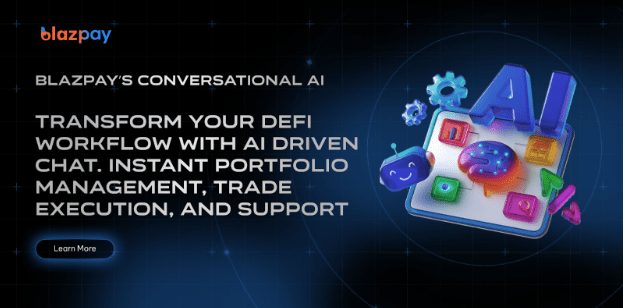Market Pulse
Ethereum (ETH), the second-largest cryptocurrency by market capitalization, is currently demonstrating significant bullish momentum, with analysts and market watchers increasingly confident in its potential to reach the $7,000 mark by the fourth quarter of {current_date_year}. This renewed optimism is largely fueled by substantial institutional investment, most notably a recent $281 million purchase of ETH by the prominent digital asset firm Bitmine. Such significant capital inflows from institutional players often act as a strong indicator of long-term confidence and can dramatically influence market sentiment and price trajectory.
Bitmine’s Strategic Accumulation
The recent disclosure of Bitmine’s massive $281 million accumulation of Ethereum is a pivotal development. Institutional-grade investments of this scale are not merely speculative; they typically reflect a deep fundamental analysis of the asset’s value proposition, technological advancements, and future market potential. Bitmine’s move suggests a strong belief in Ethereum’s sustained growth and its pivotal role in the evolving Web3 ecosystem. This investment is likely to be viewed by the broader market as a vote of confidence, potentially encouraging other large players to increase their exposure to ETH.
- Scale of Investment: The $281 million figure represents a significant portion of institutional capital directed towards a single altcoin.
- Market Impact: Such large purchases can reduce the available supply on exchanges, creating upward pressure on prices.
- Institutional Validation: Signals that major financial entities view Ethereum as a robust, investable asset.
The Rationale Behind the Bullish Outlook
Several factors contribute to the bullish sentiment surrounding Ethereum, extending beyond just institutional buying. The network’s ongoing technological advancements, particularly its transition to a Proof-of-Stake (PoS) consensus mechanism and subsequent upgrades (like Dencun), have significantly enhanced its scalability, security, and energy efficiency. These improvements make Ethereum a more attractive platform for decentralized applications (dApps), DeFi protocols, and NFT projects, driving fundamental demand for its native token, ETH. Furthermore, the deflationary aspects introduced by EIP-1559, which burns a portion of transaction fees, continue to exert supply-side pressure, reinforcing ETH’s value proposition.
Historical Precedent and Market Dynamics
The cryptocurrency market often exhibits cyclical behavior, where significant institutional interest precedes major price rallies. Historically, periods of strong accumulation by large entities have often paved the way for new all-time highs for leading assets like Ethereum. The current macro-economic environment, coupled with increasing clarity in regulatory landscapes in various jurisdictions, also plays a role in fostering an environment conducive to institutional entry. If history is any guide, Bitmine’s move could be a precursor to a broader market uptrend for Ethereum as Q4 approaches.
Potential Challenges and Risks
While the outlook appears bright, it is crucial for investors to remain cognizant of potential challenges. The cryptocurrency market remains inherently volatile, and external factors such as global economic shifts, unexpected regulatory crackdowns, or significant security breaches could impact Ethereum’s price trajectory. Competition from other Layer-1 blockchains, while currently less dominant, also poses a long-term risk. Moreover, the broader market sentiment, heavily influenced by Bitcoin’s performance, will continue to play a crucial role in dictating Ethereum’s movements.
Conclusion
Bitmine’s substantial investment in Ethereum underscores a growing institutional appetite for the leading smart contract platform. Coupled with Ethereum’s continuous technical evolution and its central role in the burgeoning decentralized economy, the target of $7,000 by Q4 of {current_date_year} appears increasingly within reach. While market volatility and external risks are ever-present, the fundamental strength and institutional validation of Ethereum position it for a potentially strong finish to the year.
Pros (Bullish Points)
- Bitmine's large institutional investment validates Ethereum's long-term value proposition.
- Increased institutional capital inflow can reduce market supply, exerting upward pressure on ETH price.
- Ongoing network upgrades and a deflationary tokenomics model enhance Ethereum's fundamental value.
Cons (Bearish Points)
- The broader cryptocurrency market remains highly volatile and susceptible to external macroeconomic factors.
- Regulatory uncertainty and potential competition from other Layer-1 blockchains could pose long-term challenges.
- Price targets, while based on analysis, are not guaranteed and depend on sustained market momentum.
Frequently Asked Questions
What is the significance of Bitmine's $281M ETH purchase?
It signifies strong institutional confidence in Ethereum's future, acting as a potential catalyst for price appreciation and broader market validation.
What factors could drive Ethereum to $7,000 by Q4?
Key drivers include significant institutional accumulation, ongoing network upgrades (PoS, EIP-1559), growing utility in DeFi and NFTs, and overall bullish crypto market sentiment.
Are there risks to this bullish outlook for Ethereum?
Yes, risks include market volatility, global economic downturns, unexpected regulatory actions, and potential competition from other blockchain platforms.



